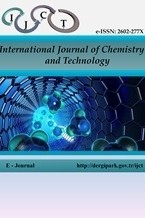Chemical extraction of Biodiesel and Parametric analysis of DI-Diesel Engine using Algae esterified Oil-Gasoline Blends
Chemical extraction of Biodiesel and Parametric analysis of DI-Diesel Engine using Algae esterified Oil-Gasoline Blends
Of late, the automobiles of all categories are massively increasing which aggravates the dependency on fossil fuel thus, the accessibility of petro-fuel decreases relentlessly. Under these circumstances, the investigations are taking new dimensions to find alternative, renewable with cost-effective fuel exclusively biofuels. However, a newer approach has been attempted for the production of biodiesel from wild stuff of Spirulina algae which is explored directly in its aquatic systems of the natural environment. The chemical extraction process was attempted with wild biomass of algae via pre-treatment for obtaining promising lipid content then; the algal oil (lipid) was subjected to the production of biodiesel through sequential transesterification reactions. The obtained biodiesel was measured as 94.65% produced from 0.920kg of algal oil extracted out of 1.6kg of algal biomass in a stipulated duration of time (2.50hr) taken for attaining maximum temperature. Further, the produced biodiesel was evaluated for its distinctive properties and the outcomes were compared with ASTM standard specifications. All the results appeared to be within the standards limit thereby, the methodical analysis was done for the performance and emission parameters via interacting algal biodiesel in the experimental (DI) diesel engine test-rig configured with a variable injection pressure of 210, 220 & 230 respectively. The blending ratio of algal diesel and gasoline (AB10 & AB 20v/v) were prepared based on volume and the results were correlated with petro-diesel. The physico-chemical parameters like color, odour, viscosity, density, total acid number, initial boiling point, flash point, calorific value, cetane number etc. were found to be significant when compared with petro-fuel. Correspondingly, the interactive parameters like flash point, pour point, cloud point, carbon residue, sulfur, ash, and water contents were correlated with the standard specifications. The substantial approach was observed in emission characteristics such as hydrocarbon (HC), carbon monoxide (CO), oxides of nitrogen (NOX) respectively in engine-algal fuel interactions. Whereas, a slight increase than petro-diesel with respect to sulfur oxide (SOX) emission and smoke opacity were also recorded. However, the marginal increase in Brake specific fuel consumption (BSFC) and Brake thermal efficiency (BTE) was noticed and the brake power (BP) was found slightly lower than petro-diesel. In conclusion, the protocol of producing biodiesel from wild stuff biomass of Spirulina maxima was found to be techno-economically feasible and this potential algal biodiesel can be recommended for the current engine applications without any alterations.
___
- Reference-1: Dr S Lokesh, Professor, University of Mysore, Mysuru, Email: boramma@rediffmail.com
- Reference-2: Prof. Manjunath, Department of Mechanical Engineering, Visvesvaraya Technological University, Email: manju.yashu44@gmail.com
